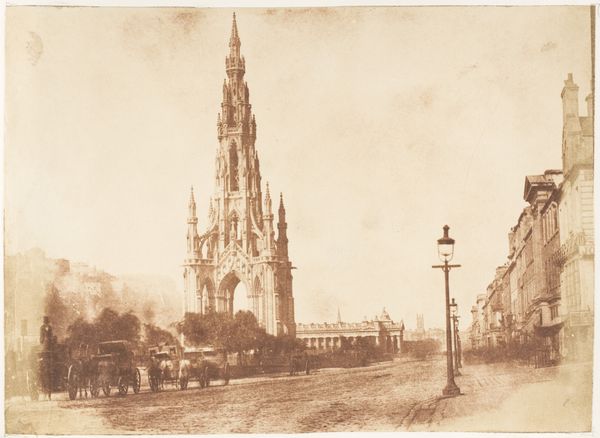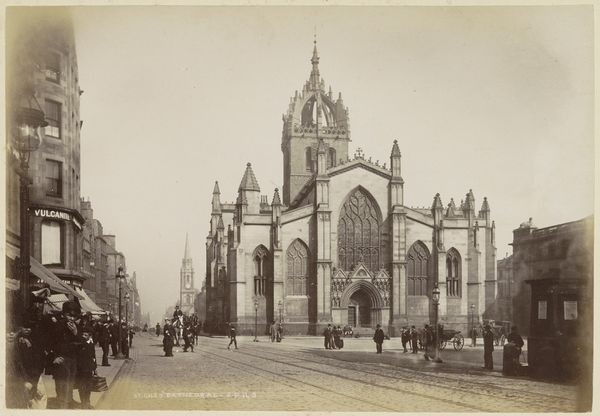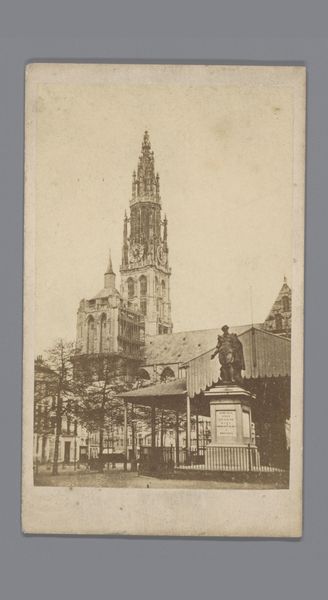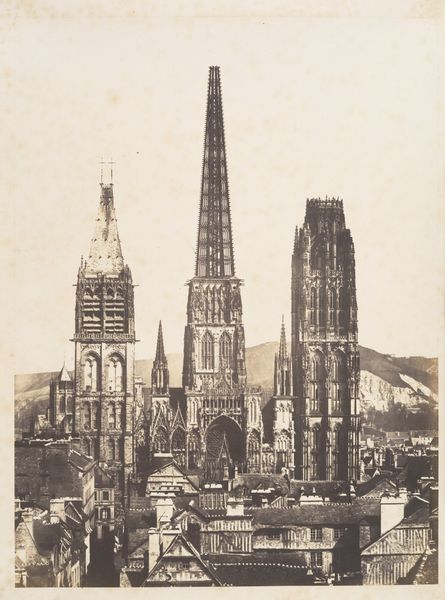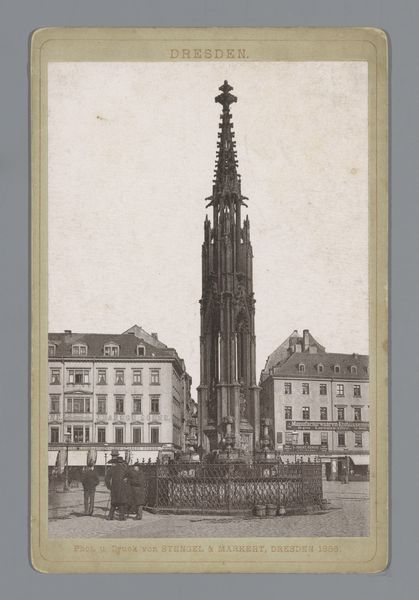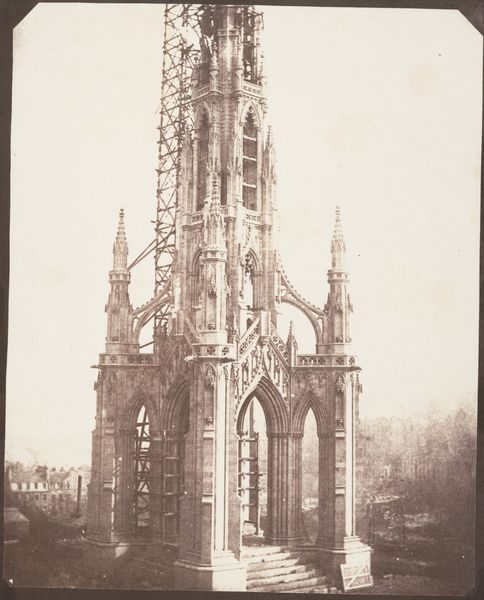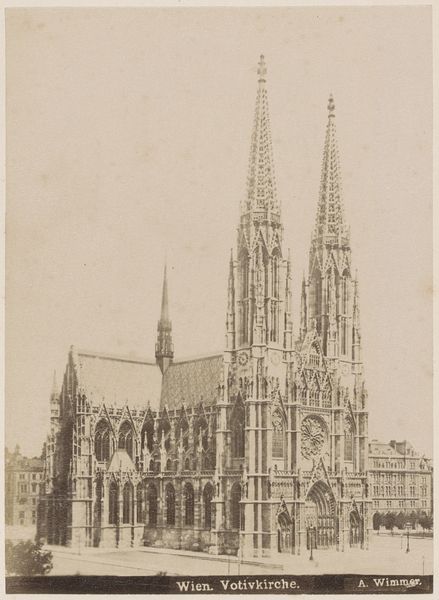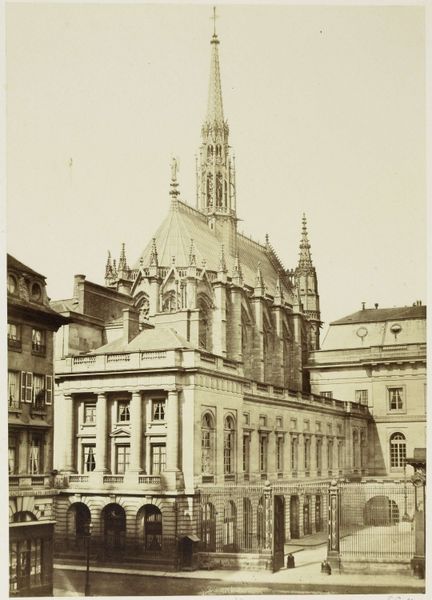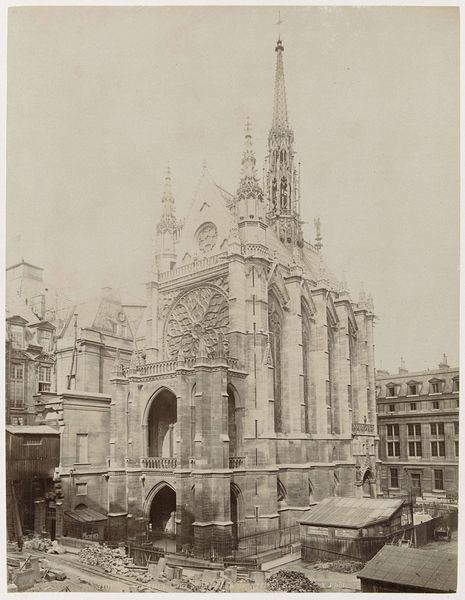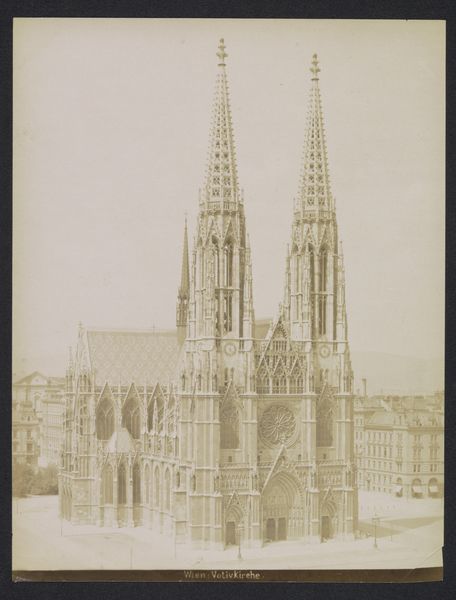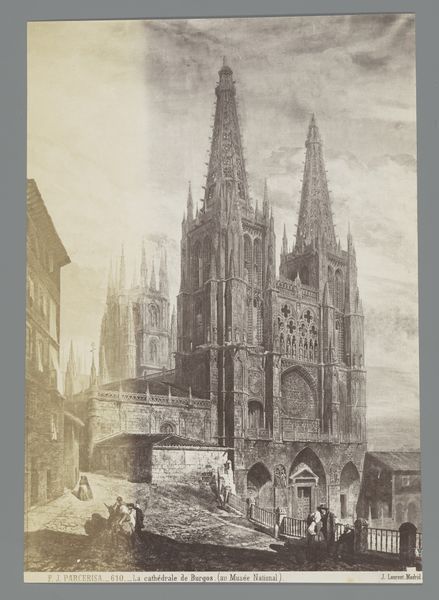
daguerreotype, photography, architecture
#
landscape
#
daguerreotype
#
photography
#
romanticism
#
19th century
#
men
#
cityscape
#
architecture
Copyright: Public Domain
Captured between 1843 and 1848, this photograph by Hill and Adamson depicts the Scott Monument in Edinburgh, rendered through the early photographic process of calotype. This technique, using paper negatives, gives the image its soft, textured quality, a stark contrast to the sharp precision we expect from modern photography. The calotype process itself speaks volumes about labor and access. Unlike the later, more easily reproducible photographic methods, the calotype was complex, time-consuming and involved meticulous handwork. The tones we see here are a direct result of chemical reactions, exposure times, and the artists' skill in manipulating these variables. Considering the monument itself, an elaborate Gothic spire dedicated to novelist Sir Walter Scott, the photograph underscores the societal values of the time. Photography democratized the means of capturing an image of the monument. The decision to depict this monument through such a laborious technique adds a layer of commentary on the value of representation, skill, and artistry.
Comments
No comments
Be the first to comment and join the conversation on the ultimate creative platform.
